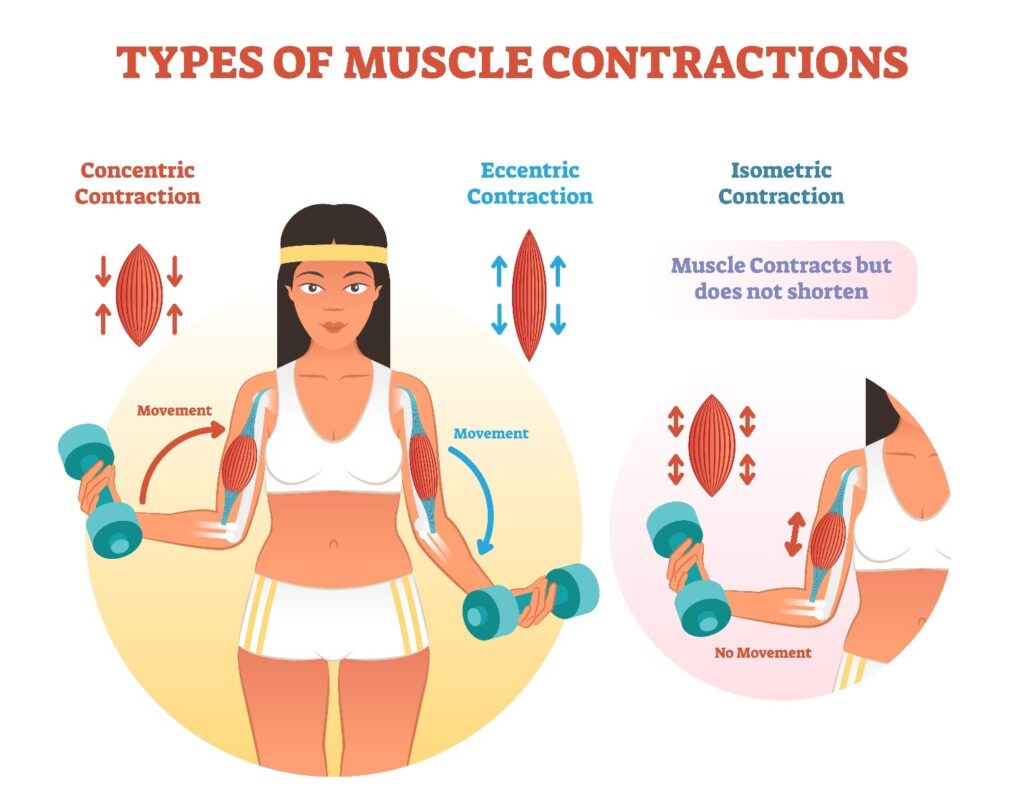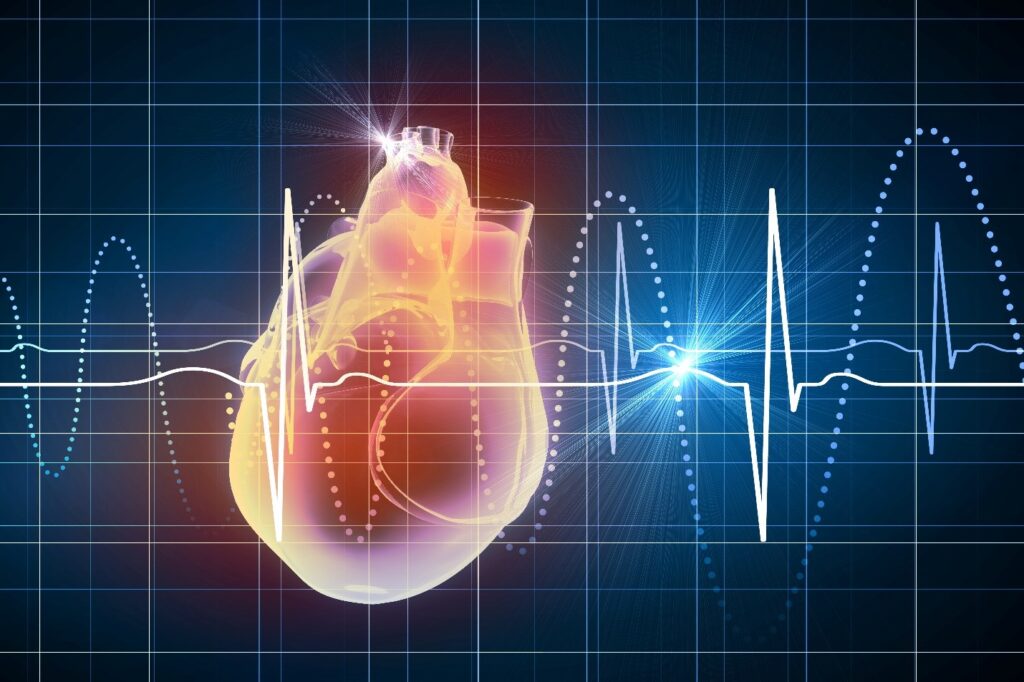No matter what type of activity, whether it’s a cardiovascular exercise like running or an anaerobic exercise like weightlifting, skeletal muscles are constantly being contracted.

Serving several purposes, muscle contractions are a necessary function of human movement, offering stability, postural support, and even body temperature regulation. Similarly, exercise, no matter the type, has the ability to aid in any fitness goal of choice, whether weight loss, strength, muscle gain, or otherwise.
When a muscle is overexerted during exercise, however, muscle contractions can result in injury or some type of temporary discomfort.
In what follows, we’ll be diving into the world of exercise, detailing the many things that happen during a given activity and how it can aid in any fitness goal of your choosing. More specifically, we’ll discuss what a muscle contraction is, what types of contractions there are, and what occurs when muscles are overexerted.
Muscle Contractions
Defined by the shortening, lengthening, and tightening of a given muscle or muscles, a muscle contraction is the activation of tension-generating muscle cells triggered when a certain stimulus occurs.
The type of stimulus or action that triggers a contraction will determine what type of contraction occurs. Some examples of common actions that trigger a specific muscle contraction include a bicep curl, a squat, and a leg raise.
No matter the type, however, all different muscle contractions serve the same purpose. They move certain parts of the body and act to provide stability and maintain proper posture. In addition, muscle contractions will also serve the function of body temperature regulation.
Types of Muscle Contractions
There are three primary types of muscle contractions: Concentric Contraction, Eccentric Contraction, and Isometric Contraction. Though independent in their location and activity, certain muscle contractions often occur at the same time other muscles are contracting. Thus, a given movement will usually lead to multiple muscle contractions.
Concentric contractions are when a muscle shortens and generates a force. Eccentric contractions describe a muscle that is lengthening and generating tension. Finally, isometric contractions occur when there is no change in length of the muscle. The different types of contractions occur based on the technique and location of the contracted muscle.

During a bicep curl, for example, there’s a concentric and eccentric contraction that occurs. In addition, depending on whether or not you decide to hold the weight in a position for a specified duration, there also may be an isometric contraction involved.
How a Muscle Contracts
The contracting portion of the muscle is otherwise known as the muscle fibers. The building blocks of the muscle fibers are proteins named actin and myosin, and when muscle contracts, these fibers either shorten and tighten or lengthen and loosen.
The cause of fiber contraction is a nervous system signal, otherwise known as an “action potential.” Through this nerve signal, the impulse reaches the end plate of the muscle and affects the muscle cells producing a contraction.
A muscle contraction is largely regulated by calcium. For those seeking to improve the efficiency of the action potential generated during a given contraction, it’s important to optimize calcium levels in the body through a healthy, nutritious, and well-rounded diet.
Muscle Spasms and Cramps
Otherwise known as muscle cramps or “Charley horses,” muscle spasms occur when the muscle involuntarily and forcefully contracts in an uncontrolled fashion. This occurs because the muscle is unable to relax due to muscle fatigue, dehydration, electrolyte imbalance, or perhaps the reason is unknown.
Muscle spasms can involve the entirety of a muscle or simply a portion of it. In the most severe cases, a muscle spasm can occur in numerous muscles simultaneously.
The most common muscles that experience muscle spasms include the thighs, hands, arms, abdomen, and calves. Though extremely common, it’s best to make efforts to avoid muscle spasms by frequent stretching via warming up and cooling down, as well as regular hydration.
Common Goals of Exercise
Most individuals are interested in learning how exercise can help them attain a specific goal. Depending on which exercise or fitness methodology used, almost any given goal can be achieved. Whether it be athletic performance, weight loss, fat burning, strength gains, muscle building, or simply an overall improvement to your health, there is an efficient exercise that can be utilized that is best suited for the desired goal.
Someone seeking to lose weight and burn fat, for example, would likely seek out a cardiovascular-based exercise that produces high caloric expenditure. Similarly, someone seeking to build muscle will likely partake in a weight training exercise that maximizes muscle contraction and stimulus.
Once the goal and exercise have been decided, it’s important also to learn how to maximize efforts. An example of a key component of effort is intensity, which can be measured by perceived excursion or, more accurately, by heart rate.

It has been understood that an increase in heart rate translates greatly to an improvement in performance, ultimately improving the overall quality of the workout.
Final Thoughts
Exercise is a lifestyle component that should be part of any healthy lifestyle. Not only is it beneficial for performance and athletic improvements but for one’s general mental and physical health and well-being.
It’s important to understand the basic actions of exercise, such as muscle contractions, and learn how to improve efficiency of these contractions to achieve the goals of exercise.
